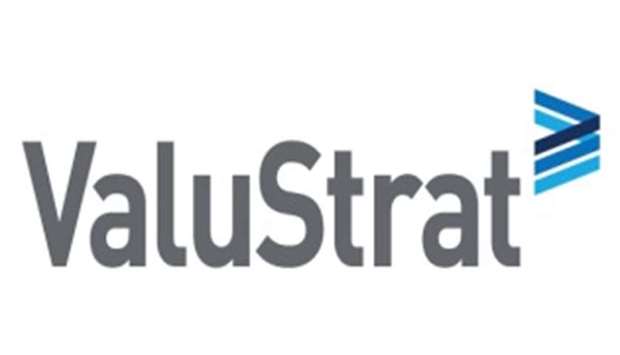Qatar’s real estate sector may see “rising affordability and competitiveness” next year, a much-needed stimulus in the market, a new report has shown.
According to research and consultancy firm ValuStrat, a “downward trajectory” is expected in all sectors in the real estate market in 2019, but with “slowing decline rates.”
Increased supply in apartments was seen in central areas of Doha such as Al Sadd, Fereej Bin Mahmoud, Al Mansoura and Al Muntazah and prime areas such as Lusail and The Pearl, ValuStrat said.
Simultaneously, villa supply concentrated in suburban areas of Doha such as Al Wakrah, Umm Salal Ali, Umm Salal Mohammad, Al Maamoura and Ain Khalid.
Due to oversupply in some areas, landlords reduced rents to maximise occupancy. Citywide rental values decreased by 12.4% and the ValuStrat Price Index (VPI) indicated falling capital values by approximately 11%.
An emerging flight to quality was evident as decreasing rental and capital values appeared steeper in secondary locations as compared to high-end neighbourhoods, encouraging tenants to trade up. Some central areas in Doha saw stabilisation of rents, while secondary locations outside of Doha saw yearly rent and capital value reductions of up to 20%.
New office stock was seen in areas such as Lusail, C-Ring Road (Al Muntazah, Al Hilal and Rawdhat Al Khail), Salwa Road (Fereej Abdul Aziz) and B-Ring Road (Fereej Bin Dirham), Al Sadd and Old Salata. Increasing supply and vacancy, forced landlords to reduce rents, especially in secondary locations.
Offices in Al Sadd, C-Ring Road and Salwa Road experienced steep falls in rents ranging from 15-25% compared to 2017, ValuStrat said.
ValuStrat Qatar general manager Pawel Banach said, “During 2018, the Qatar real estate market was transitioning to a new equilibrium as public and private sectors started adapting to regional geopolitical challenges. By October real estate transactions reached 3,480 with a total value of QR19.7bn. Despite, an increase in transactional volume and activity in the non-hydro-carbon sector, the influx of supply contributed to softening rents and prices.”
Nearly 75% of the upcoming residential supply will be concentrated in The Pearl and Lusail, which might negatively impact the market rent in the area once projects are handed over. On the contrary, rental rates in central areas of Doha are expected to stabilise.
In the office sector, rents are expected to decline in Lusail, as 80% of the projected supply for 2019 will be focused there. This is expected to also affect rents in secondary office locations.
Two free zones: Umm Al Houl (34 sq km) and Ras Bufantas (4.01 sq km) are expected to start receiving foreign and local investors in the industrial sector. This is expected to continue to put downward pressure on rents in relatively older industrial areas, ValuStrat said.
Hospitality sector to see an addition of six properties (5/4-star): Al Messila Resort, Mandarin Hotel, Zulal Wellness Resort, M Gallery Boutique Hotel, Panorama Residences and Suites and Plaza Rayhaan. Mid-market hotel segment might continue to show improvement in occupancy.
By the end of 2019, the population of Qatar is expected to reach 2.7mn. Assuming all projects are delivered on time, Qatar will comprise of 30,000 hotel keys and hotel apartments, 300,000 residential units and an office supply of 4.8 sqm GLA, ValuStrat said.
ValuStrat Qatar market research analyst Anum Hasan noted, “For 2019, we expect downward trajectory to continue in all sectors but with slowing decline rates. This has translated in rising affordability and competitiveness, a much-needed stimulus in Qatar Market.”
Increased supply in apartments was seen in central areas of Doha such as Al Sadd, Fereej Bin Mahmoud, Al Mansoura and Al Muntazah and prime areas such as Lusail and The Pearl, ValuStrat said.
Simultaneously, villa supply concentrated in suburban areas of Doha such as Al Wakrah, Umm Salal Ali, Umm Salal Mohammad, Al Maamoura and Ain Khalid.
Due to oversupply in some areas, landlords reduced rents to maximise occupancy. Citywide rental values decreased by 12.4% and the ValuStrat Price Index (VPI) indicated falling capital values by approximately 11%.
An emerging flight to quality was evident as decreasing rental and capital values appeared steeper in secondary locations as compared to high-end neighbourhoods, encouraging tenants to trade up. Some central areas in Doha saw stabilisation of rents, while secondary locations outside of Doha saw yearly rent and capital value reductions of up to 20%.
New office stock was seen in areas such as Lusail, C-Ring Road (Al Muntazah, Al Hilal and Rawdhat Al Khail), Salwa Road (Fereej Abdul Aziz) and B-Ring Road (Fereej Bin Dirham), Al Sadd and Old Salata. Increasing supply and vacancy, forced landlords to reduce rents, especially in secondary locations.
Offices in Al Sadd, C-Ring Road and Salwa Road experienced steep falls in rents ranging from 15-25% compared to 2017, ValuStrat said.
ValuStrat Qatar general manager Pawel Banach said, “During 2018, the Qatar real estate market was transitioning to a new equilibrium as public and private sectors started adapting to regional geopolitical challenges. By October real estate transactions reached 3,480 with a total value of QR19.7bn. Despite, an increase in transactional volume and activity in the non-hydro-carbon sector, the influx of supply contributed to softening rents and prices.”
Nearly 75% of the upcoming residential supply will be concentrated in The Pearl and Lusail, which might negatively impact the market rent in the area once projects are handed over. On the contrary, rental rates in central areas of Doha are expected to stabilise.
In the office sector, rents are expected to decline in Lusail, as 80% of the projected supply for 2019 will be focused there. This is expected to also affect rents in secondary office locations.
Two free zones: Umm Al Houl (34 sq km) and Ras Bufantas (4.01 sq km) are expected to start receiving foreign and local investors in the industrial sector. This is expected to continue to put downward pressure on rents in relatively older industrial areas, ValuStrat said.
Hospitality sector to see an addition of six properties (5/4-star): Al Messila Resort, Mandarin Hotel, Zulal Wellness Resort, M Gallery Boutique Hotel, Panorama Residences and Suites and Plaza Rayhaan. Mid-market hotel segment might continue to show improvement in occupancy.
By the end of 2019, the population of Qatar is expected to reach 2.7mn. Assuming all projects are delivered on time, Qatar will comprise of 30,000 hotel keys and hotel apartments, 300,000 residential units and an office supply of 4.8 sqm GLA, ValuStrat said.
ValuStrat Qatar market research analyst Anum Hasan noted, “For 2019, we expect downward trajectory to continue in all sectors but with slowing decline rates. This has translated in rising affordability and competitiveness, a much-needed stimulus in Qatar Market.”




